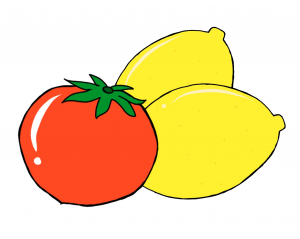Traditional taste becomes a world treasure
・Natsu Shimamura, a non-fiction writer
Natsu Shimamura, a non-fiction writer who introduced the slow food movement from Italy to Japan early on and sparked a slow food boom, is an indigenous breed that has been protected not only in Italy and other countries but also in Japan. and the fact that there is a great deal of interest in traditional food culture.
Amalfi lemon cultivation
Amalfi Coast in southern Italy, facing the Mediterranean Sea.The beautiful scenery of the city, which is built on the steep slopes of the coast, has been designated as a UNESCO World Heritage Site.
According to Mr. Shimamura, the quay wall made of limestone that collapses easily,19Around the XNUMXth century, soil was transported and lemon cultivation began.
However, when very cheap African and Spanish lemons began to hit the market, Amalfi's lemon farmers were in trouble.
However, if lemon farming becomes obsolete and terraced fields become devastated, there is a danger that the soil will run off and landslides will occur.If that happens, the valuable scenery, which is a tourism resource, will be damaged, and it will be a huge blow to the local economy.
Realizing this, the local people worked to manage the fields in order to protect the indigenous lemons, the terraced fields, and the beautiful scenery.
"At a glance, you can see how closely food is related to the local landscape and tourism," Shimamura explained, showing a landscape photo of Amalfi.
The popularity of tomatoes that take a lot of time
Garlic is an essential part of the Italian dining table.With cheap and large garlic from China dominating the market, Italian garlic producers are having a hard time communicating the value of domestically produced garlic to consumers.
“A lot of onions also come from China, and traditional Italian red onions cost about twice as much. In an old town in Tuscany,13The red onion, which has been around for centuries, has almost disappeared, but the locals have revived it.”
Tomatoes grown in the arid foothills of Mount Vesuvius near Naples are rich in minerals.The sugar content is low, so if you harvest a lot of fruits and dry them for a month or two, they will ripen and become elegantly sweet.
Tomatoes that added value with a little effort became popular, the number of producers doubled, and the canned food developed by local young people grew into a major brand.

Italy also has a culture of fish sauce called "Colatura".
This sardine fish sauce has continued for XNUMX years in a fishing town on the Amalfi Coast.
It is said that people in Akita and the Oga Peninsula who make ``shottsuru'' using sandfish were very encouraged when they learned about colatura from distant Italy.
Also, at a pizzeria in Sicily, you can choose from ten types of flour alone. “Among them, there is a blend of three indigenous varieties. Ancient wheat and spelled wheat sell for about double the price.”
Several types of wheat and lentils are cultivated in the mountains of central Abruzzo at XNUMX-XNUMX meters, and tourists from all over the world flock to eat lentil dishes.
As an example of Japan, Mr. Shimamura introduced a restaurant in Mie Prefecture where you can eat fifty kinds of native vegetables.
A young couple who used to be nurses, while searching for "healing" that is difficult to find in the medical field, met Native Americans on their honeymoon and ended up with food.
Change in consciousness leads to social reform
The Slow Food movement began in XNUMX, when McDonald's opened in Rome, with the aim of "protecting the diversity of tastes and food cultures" in opposition to the homogenization of tastes that was spreading around the world.
At the time of its founding, the Slow Food Association (XNUMX) protects small producers who produce high-quality products, (XNUMX) educates consumers, including children, about taste, and (XNUMX) uses rare agricultural and marine products such as native species and traditional fishing methods, and traditional flavors. Protecting the three pillars.
“Protecting local agricultural products and processed products, including organic products, is not only good for the environment and people, but it will undoubtedly become one of the keys to supporting the local economy in the future. Food that can only be eaten in this region at this time of year cannot be without value.It is truly a treasure of the world.”
The Slow Food movement later added the perspective of the North-South problem of food.
“It is important to rectify the regional disparity between the developed countries, which concentrate on consuming food and throw away a large amount of food, and the Southern Hemisphere, which is relegated to being a place of production and origin and is beaten up.”
The right of local farmers to freely access seeds has also come to be emphasized in opposition to the business model that bundles genetically modified seeds and pesticides.
"We, who usually eat food, can make a big social change by changing our awareness. Each and every one of you is playing a leading role so that the next generation of children and grandchildren will not be told that you left only garbage from the nuclear power plant. ”
Many people nodded at Mr. Shimamura's words.
[Health Information] April XNUMX Issue Seeds and Our Life ④
-----------------------------------------------------------------------------------
Natsu Shimamura
Born in Fukuoka Prefecture in 1963.He graduated from Tokyo University of the Arts, Department of Fine Arts.He majored in Italian art history, and after graduating he went to Italy to study.In his book, "Slow food life!" ”, “Dialogue with an Exorcist” (38st Century International Non-Fiction Award, Excellence Award), etc.He is a member of Nippon Tokyo Slow Food Association.
- March 2020, 05 Updated at 25:09
- Blog Category:03_Health Information
